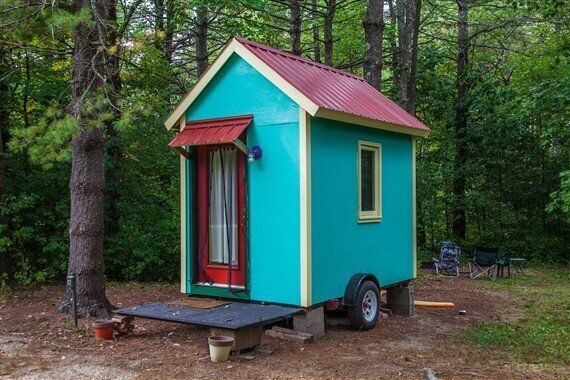
Ever strolled through Hampstead Village admiring its sprawling mansions and thinking, wow, imagine living there? Everything about our society tells us that the measure of success is wealth, and wealth can be measured in square feet. That's where the growing revolution towards miniature houses comes in.
All across the globe, from Australia to Alaska the movement towards minimalist living is catching like wildfire. If we had to characterise it in just a few words they would be: space utilization, mobility, and financial accessibility. But like all revolutions, this one has two sides, I call them: Grandes vs Minuscules.
What is a Grande? A Grande would be someone like Lady Mary Crawley of Downton Abbey who wouldn't be seen dead in a campervan or slumming it in a trailer - or their equivalents in twentieth-century England. The Grande seeks conventionality and luxury, accepting mortgages, high rent, or a stressful job as the rules of the game. Grandes don't do minimalism on a large scale.
What is a Minuscule? The Minuscule, to use another fictional paradigm, is Viggo Mortensen in this year's Oscar nominated, Captain Fantastic. It is a person who thinks outside the set box and dares to risk it all for their version of happiness. They dream big but live small. The Minuscule is you and I, if only we had the guts.
YouTube channels like Living Big In A Tiny House, Open Concept and Exploring Alternatives show the fascinating range of these houses; from gypsy caravans to buses, to hobbit-style caves.
Take for instance a 24-foot-long, 8.5-foot-wide trailer in Alaska. Everything inside it has been custom-built to maximise space use. The result is a sunlit, spacious tiny house that includes an elevator bed, bathroom, dining and study area, and even the possibility to house overnight guests. We struggle to find sleeping space for people in our regular homes, but given the ingenious use of every square footage in this tiny house, it means we can surprisingly allow ourselves more options.
Interestingly, the tiny house revolution differs from region to region and person to person. Take Rumi and Katrina, two women from Kumano, Japan living the nomadic life by travelling and teaching across the country. They should probably get a prize for what seems like the smallest of the tiny homes. At just 600kg, including what's inside, it cost around 30,000 US dollars to build. Using organic architecture, almost everything in their mobile home has been made from natural wood. Indeed, when you step inside it's like entering a tree house where nature meets human purpose and allows the two to intimately connect.
Of course, all tiny houses, just like the big ones, come with their own particulars. In the case of Rumi and Katrina they chose not to include a shower, preferring to make use of Japan's ubiquitous hot springs. It would also be foolish to deny that a tiny home, however spacious and uncluttered, would not be a tight fit for two women sharing just one room. Again, our ability to adapt to new surroundings seems to help. You just find your own area of space however small and do what you need to do, the friends cheerfully explain.
But I can see the Grandes scoffing at the thought of having to live cheek-to-cheek with another person, not being able to shower at will, and constantly restricting their lives and possessions just so they fit into a tiny match-box-of-a-home. No way! I may be stressed and overworked but at least I have my privacy and my stuff - the Grande smugly protests. I won't argue with that.
The truth is that this little revolution is a private affair. Between you and your Self. Judging from the stories, those who embrace the Minuscule within them do so for practical as well as rebellious reasons. When the cost of a home in London is 14 times the average salary, maybe there is a warped logic after all in wanting to own something, however tiny, that uniquely reflects us and is rent/mortgage free.
Building permits and parking issues aside. There's a prejudice attached to cramped quarters, they echo of Soviet-era communal flats and suggest indolence. But these quaint dwellings which can free-up our time demand the ultimate sacrifice; a radical change of habits and lifestyle. This revolution won't cause an overthrow, but it will keep having defectors.